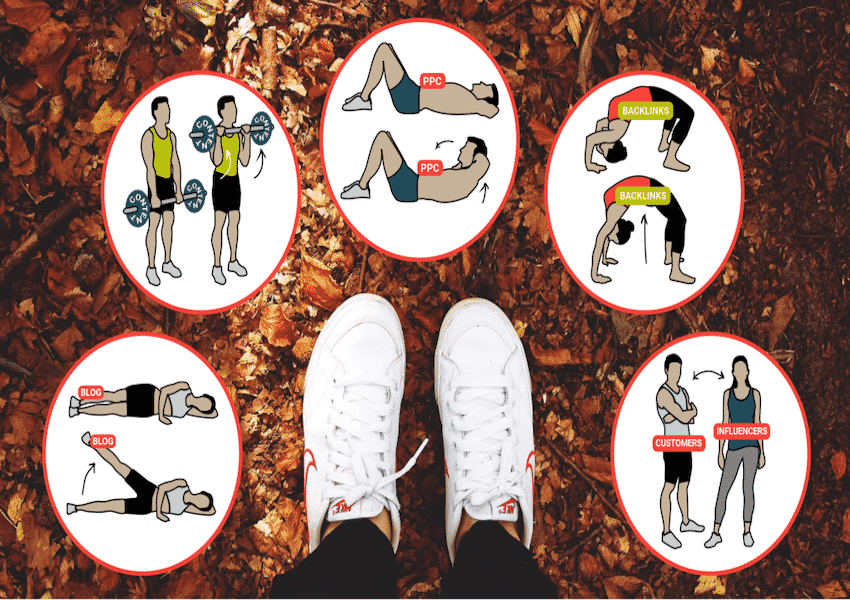Most of us here at Pure Visibility are parents—it’s one of the reasons we have such a flexible work environment. If your kid is sick or there’s a snow day, working from home is no problem! We’re used to dealing with this challenge semi-regularly. But, suddenly we’re facing a marathon of WFH with kids, without a definite end in sight.
How are we going to get through this? It’s obvious there is no right answer. At Pure Visibility we are being patient, finding new routines, and sharing our best tips with each other. And knowing there are so many more of us facing this challenge right now, we thought we’d share those tips with you, as well.
Build a WFH routine that works for you and your kids
As with all things that involve kids, your biggest asset is time. But when you’re juggling work with fidgety, bored, hungry, tired, needy, dawdling, wound-up, cranky, button-pushing, or melting-down kids, there is never enough of it. To make the most of what time we do have, the parents at Pure Visibility agree: structure is vital. Below are our best tips for creating a “new normal” for your household during these challenging times, so you can be productive, stay sane, and find balance while working from home with kids.
- Get your kids up and ready for the day, too. In our first post on working from home tips, we recommend that telecommuters get up and ready for the day as part of a regular routine. This is all the more important with kids! If they are young enough to still do as you ask, get them up and ready to go like a normal school day. Of course this doesn’t have to happen at 6 am, but having a regular morning routine will make this process easier in the long run.
Plan a transition activity that you can do together. Think of something that you can do together before you “go to work” and they “go to school.” It could be reading aloud with little ones, having breakfast together, or taking a 15-minute walk. Repeat your transition activity at the end of your workday.
- Make the time you do have for younger kids predictable, and spread it throughout the day. For instance, in addition to your transition activity at the beginning and end of the workday, you may set aside time to do a special activity or have your lunch together (without checking your phone or computer). Don’t expect young ones to let you bank all your “together time” in the morning or afternoon so you can work without interruption for the rest of the day. Elementary-aged kids are used to routines that involve several breaks in their day and activities that tend to be 20 – 30 minutes long for the youngest, and up to 40 – 50 minutes as they get older. It may not be your ideal working scenario, but you can use this to your advantage to get through the day.
Set ground rules for workdays. If you have an office or a separate room where you are working, set some door policies. For example, if the door is closed they cannot come in, if the door is open they must knock first, etc. Be sure to also define the exceptions to these rules, such as if there’s an emergency (be sure to explain what a true emergency is). If you don’t have a separate space to work, you can use something like headphones on as the signal that your kids must knock on the table first before interrupting.
- Prepare your kids for when you need uninterrupted time. If you have an important phone or video call scheduled, make sure you let your kids know ahead of time. Set expectations that you cannot be disturbed and plan out an activity or two for younger ones to do. If you’re normally concerned about too much screen time, now is a forgivable time to relax the rules.
Set up your kids to successfully police themselves. Create checklists of their expected activities while you are working. Even a kindergartener can learn to recognize a list of repeated tasks. Ask older kids to help the younger ones through activity transitions. When you do take breaks, young ones will love reporting on their progress.
- Have snacks ready for the day. Younger kids especially are used to regular snacks throughout the day—be prepared to have a morning and afternoon snack ready to go, that they can access themselves. And don’t forget drinks, too. A couple pre-filled water bottles in the fridge can make it easier on everyone.
- Get them outside! There are about a bazillion studies that show how play outdoors is vital for development. If your kids are old enough to play in the backyard or bike around the block on their own, send them out! No matter how much they complain beforehand, once they’re outside they will quickly find a way to keep themselves busy, and for quite a while. Older kids need fresh air, too; biking, running, walking, or even just reading a book outside can help anyone feel refreshed and improve attitudes.
- Give yourself a break regarding screen time. Yes, we all know less is better, but there will be times where you absolutely need to be on an important call, or heads down in concentration. These are exceptional times, so give yourself a break—you won’t ruin your kids for life. And don’t forget, there’s a difference between mindlessly watching cartoons and actually interacting with the entertainment. Consider a 50/50 rule where half of the allotted screen time is focused on a creative game, such as Minecraft.Obviously addressing the screen time of older kids with their own devices is a completely different challenge, but again, take a deep breath—these are exceptional times. We are all doing the best we can, and if an iPhone keeps your child connected to their friends, there is a benefit to that.
- Invest in new hobbies. Now is a great time to help your kids find self-directed activities that really hold their interest. There are all sorts of starter hobby kits and instruction books available on Amazon, and countless instructional videos available through YouTube and YouTube Kids. However, resist the urge to buy all the supplies at once. Start small to be sure your kids really do enjoy their new hobby before you waste too much money (and storage space) on the materials. Then, if they continue to be engaged, consider ordering one new item every week or two to encourage the hobby. For example, if your child wants to learn to knit, get some new yarn one week, and a set of stitch markers the next. Set aside time each day for your kids to work on their new hobby.
- Let your kids use telecommuting tools, too. Just as Zoom happy hours have become a thing, so have Zoom playdates. It’s impressive how long even the youngest can be entertained by a video conference with his or her friends. Basic Zoom accounts are available for free and have a 40-minute meeting limit (which is perfect for kids) with unlimited guests.
Set boundaries with your work, not just your kids. When you’re working from home, it’s vital to have clear boundaries about when you are “at work” and when you are not. When you add kids, it’s even more necessary. Make sure your team members know and respect your off hours. Your kids need to be able to count on work ending when you said you would, just as much as you need to count on them to stick to their routine.
A bit of gratitude for WFH with Kids
In the past three weeks I’ve been WFH with my kids, I’ve really enjoyed the together time we’ve built into our days. On our morning walks, my elementary-aged kids bring cameras to document the spring flowers they find. After lunch on most weekdays, I take an extra half hour or so for a special activity with them, such as baking or a craft. Has our routine been perfect every day? No, not even close. But we are doing our best.
I also can’t help but feel lucky to be living in a time when we have so many telecommuting tools available to make working and learning from home possible. Over the past decade, more and more businesses have come to embrace WFH and are already sympathetic to the fact that telecommuting means children (not to mention pets and spouses) will also be around. There will be interruptions. Let’s all go easy on ourselves and our colleagues as we adjust to our new normal, and let’s find ways to appreciate these unique moments we wouldn’t have had otherwise.


 Plan a transition activity that you can do together. Think of something that you can do together before you “go to work” and they “go to school.” It could be reading aloud with little ones, having breakfast together, or taking a 15-minute walk. Repeat your transition activity at the end of your workday.
Plan a transition activity that you can do together. Think of something that you can do together before you “go to work” and they “go to school.” It could be reading aloud with little ones, having breakfast together, or taking a 15-minute walk. Repeat your transition activity at the end of your workday. Set ground rules for workdays. If you have an office or a separate room where you are working, set some door policies. For example, if the door is closed they cannot come in, if the door is open they must knock first, etc. Be sure to also define the exceptions to these rules, such as if there’s an emergency (be sure to explain what a true emergency is). If you don’t have a separate space to work, you can use something like headphones on as the signal that your kids must knock on the table first before interrupting.
Set ground rules for workdays. If you have an office or a separate room where you are working, set some door policies. For example, if the door is closed they cannot come in, if the door is open they must knock first, etc. Be sure to also define the exceptions to these rules, such as if there’s an emergency (be sure to explain what a true emergency is). If you don’t have a separate space to work, you can use something like headphones on as the signal that your kids must knock on the table first before interrupting. Set up your kids to successfully police themselves. Create checklists of their expected activities while you are working. Even a kindergartener can learn to recognize a list of repeated tasks. Ask older kids to help the younger ones through activity transitions. When you do take breaks, young ones will love reporting on their progress.
Set up your kids to successfully police themselves. Create checklists of their expected activities while you are working. Even a kindergartener can learn to recognize a list of repeated tasks. Ask older kids to help the younger ones through activity transitions. When you do take breaks, young ones will love reporting on their progress.
 Set boundaries with your work, not just your kids. When you’re working from home, it’s vital to have clear boundaries about when you are “at work” and when you are not. When you add kids, it’s even more necessary. Make sure your team members know and respect your off hours. Your kids need to be able to count on work ending when you said you would, just as much as you need to count on them to stick to their routine.
Set boundaries with your work, not just your kids. When you’re working from home, it’s vital to have clear boundaries about when you are “at work” and when you are not. When you add kids, it’s even more necessary. Make sure your team members know and respect your off hours. Your kids need to be able to count on work ending when you said you would, just as much as you need to count on them to stick to their routine.

